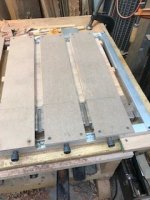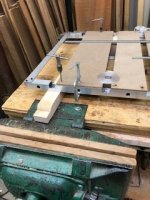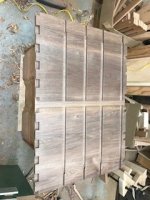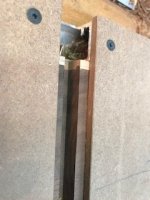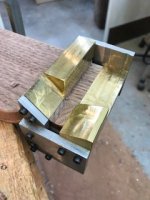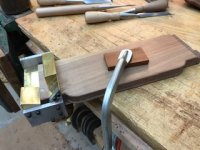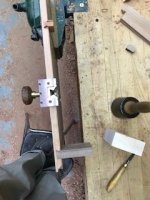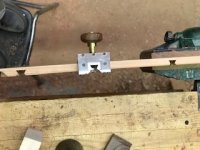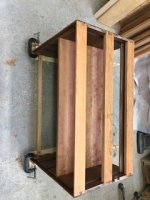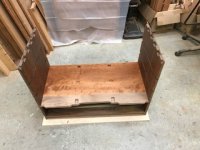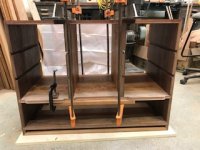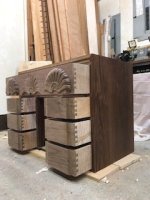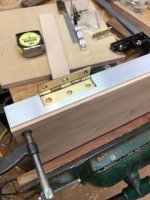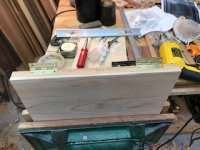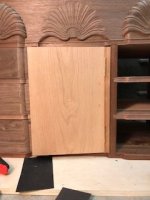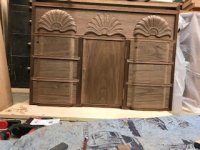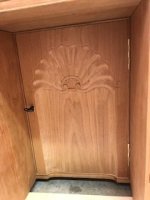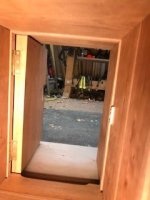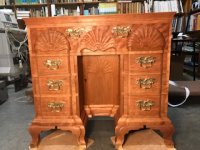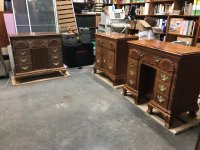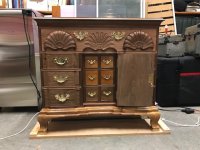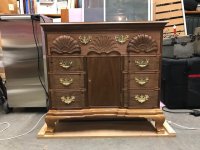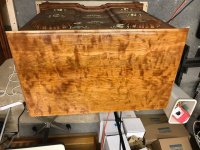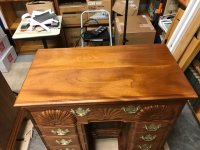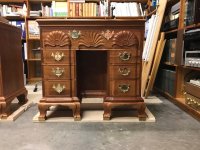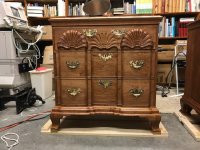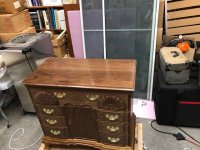Michael Stiennon
Member
I am coming to the end of a three year project to build three versions of the Newport
blockfront. Starting with carving the shells, then moving on to the bases, the three drawer chest is assembled and its drawers complete. I haven’t seen a construction of the flush front version of the bureau table so it may be of interest to members.
As a self-taught wood worker who had never seen an original, I belong to the Wallace Nutting-FWW#23 school. My cockbead-on-frame construction method is different from the original method where rabbets are planed for later inset of the vertical cockbeads and dadoes planed for the dustboard/stretchers for each drawer. The 5/32" cockbeads are molded directly on the sides with a beading plane. A jig is used to rout a 7/16" wide x ½" deep stopped dado for the drawer blades which are finished with a dovetail jig. 3/4" wide x 3/8" deep stopped dadoes are routed for the full width ½" thick dust boards which are wedged in place with a 1/4" wear strip, glued in front and slot screwed at the back.
From my previous career as an ATM and medical device builder I have access to a metal shop which greatly simplifies jig manufacture. As you can see in the close up, I use thin strips front and back to avoid blowout. The front strip has a 5/32" groove. The routed sides are sitting on the three drawer chest.
blockfront. Starting with carving the shells, then moving on to the bases, the three drawer chest is assembled and its drawers complete. I haven’t seen a construction of the flush front version of the bureau table so it may be of interest to members.
As a self-taught wood worker who had never seen an original, I belong to the Wallace Nutting-FWW#23 school. My cockbead-on-frame construction method is different from the original method where rabbets are planed for later inset of the vertical cockbeads and dadoes planed for the dustboard/stretchers for each drawer. The 5/32" cockbeads are molded directly on the sides with a beading plane. A jig is used to rout a 7/16" wide x ½" deep stopped dado for the drawer blades which are finished with a dovetail jig. 3/4" wide x 3/8" deep stopped dadoes are routed for the full width ½" thick dust boards which are wedged in place with a 1/4" wear strip, glued in front and slot screwed at the back.
From my previous career as an ATM and medical device builder I have access to a metal shop which greatly simplifies jig manufacture. As you can see in the close up, I use thin strips front and back to avoid blowout. The front strip has a 5/32" groove. The routed sides are sitting on the three drawer chest.

